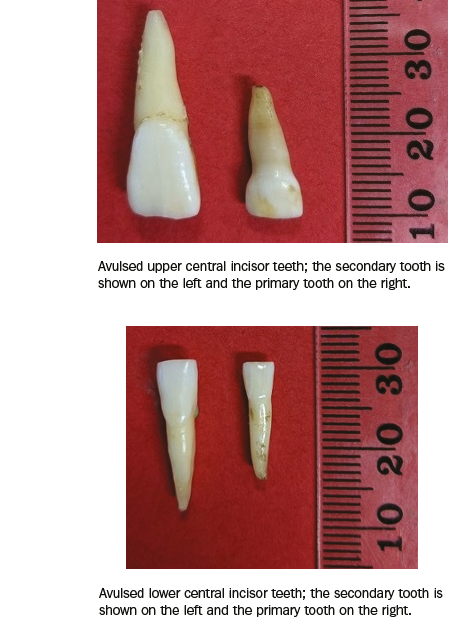Assessment of tooth avulsion
Avulsion of a tooth is the complete disarticulation of the tooth from its bone socket. In most cases, the tooth is knocked out of the mouth completely, but occasionally it may remain in the mouth.
Assess all patients with trauma to their teeth for other injuries, especially head and neck injuries.
Assess if the tooth has been avulsed—it may have been intruded (pushed into the alveolar bone) or the tooth root may have fractured so that only the crown has been lost. Refer the patient urgently to a dentist for X-ray, assessment and management of an intruded or fractured tooth.
If a tooth appears to be missing and is not found at the site of the accident, consider if the patient has inhaled or swallowed the tooth.
If the avulsed tooth has been retrieved, determine if it is a primary (baby) or secondary (adult) tooth. Children older than 5 years may have a mixture of primary and secondary teeth, and it may be difficult to distinguish between avulsed teeth. In general, primary teeth are much smaller in all dimensions and lighter in colour than secondary teeth; however, secondary teeth in 5- to 8-year-old children have short roots with large crowns because the roots have not yet fully developed. Additionally, the roots of a primary tooth resorb when they are nearing the time they would naturally fall out, so appear blunted or shorter. See Avulsed primary and secondary teeth for images of avulsed primary and secondary teeth. Primary teeth eruption and exfoliation pattern and Secondary teeth eruption pattern give an indication of the average ages at which primary tooth exfoliation and secondary tooth eruption occurs.
Check the patient’s tetanus immunisation status (see Requirement for tetanus prophylaxis for the requirement for tetanus immunisation).

